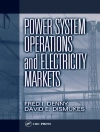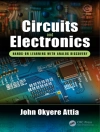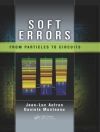This second edition of the original volume adds significant new innovations for revolutionizing the processes and methods used in petroleum reservoir simulations. With the advent of shale drilling, hydraulic fracturing, and underbalanced drilling has come a virtual renaissance of scientific methodologies in the oil and gas industry. New ways of thinking are being pioneered, and Dr. Islam and his team have, for years now, been at the forefront of these important changes.
This book clarifies the underlying mathematics and physics behind reservoir simulation and makes it easy to have a range of simulation results along with their respective probability. This makes the risk analysis based on knowledge rather than guess work. The book offers by far the strongest tool for engineers and managers to back up reservoir simulation predictions with real science. The book adds transparency and ease to the process of reservoir simulation in way never witnessed before. Finally, No other book provides readers complete access to the 3D, 3-phase reservoir simulation software that is available with this text.
A must-have for any reservoir engineer or petroleum engineer working upstream, whether in exploration, drilling, or production, this text is also a valuable textbook for advanced students and graduate students in petroleum or chemical engineering departments.
Cuprins
Preface xv
1 Introduction 1
1.1 Summary 1
1.2 Opening Remarks 2
1.3 The Need for a Knowledge-Based Approach 2
1.4 Summary of Chapters 5
2 Reservoir Simulation Background 7
2.1 Essence of Reservoir Simulation 8
2.2 Assumptions Behind Various Modeling Approaches 10
2.2.1 Material Balance Equation 11
2.2.2 Decline Curve 12
2.2.3 Statistical Method 13
2.2.4 Analytical Methods 15
2.2.5 Finite-Difference Methods 16
2.2.6 Darcy’s Law 19
2.3 Recent Advances in Reservoir Simulation 19
2.3.1 Speed and Accuracy 19
2.3.2 New Fluid-Flow Equations 21
2.3.3 Coupled Fluid Flow and Geo-Mechanical Stress Model 26
2.3.4 Fluid-Flow Modeling Under Thermal Stress 29
2.4 Memory Models 31
2.4.1 Thermal Hysteresis 32
2.4.2 Mathematical and Numerical Models 32
2.5 Future Challenges in Reservoir Simulation 33
2.5.1 Experimental Challenges 33
2.5.2 Numerical Challenges 35
2.5.2.1 Theory of Onset and Propagation
of Fractures due to Thermal Stress 35
2.5.2.2 Viscous Fingering during Miscible Displacement 36
3 Reservoir Simulator-Input/Output 39
3.1 Input and Output Data 40
3.2 Geological and Geophysical Modeling 42
3.3 Reservoir Characterization 45
3.3.1 Representative Elementary Volume, REV 46
3.3.2 Fluid and Rock Properties 49
3.3.2.1 Fluid Properties 49
3.3.3 Rock Properties 54
3.4 Upscaling 58
3.4.1 Power Law Averaging Method 59
3.4.2 Pressure-Solver Method 60
3.4.3 Renormalization Technique 62
3.4.4 Multiphase Flow Upscaling 63
3.5 Pressure/Production Data 65
3.6 Phase Saturations Distribution 66
3.7 Reservoir Simulator Output 68
3.8 History Matching 70
3.8.1 History-Matching Formulation 72
3.8.2 Uncertainty Analysis 75
3.8.2.1 Measurement Uncertainty 76
3.8.2.2 Upscaling Uncertainty 78
3.8.2.3 Model Error 79
3.8.2.4 The Prediction Uncertainty 80
3.9 Real-Time Monitoring 81
4 Reservoir Simulators: Problems, Shortcomings, and Some Solution Techniques 85
4.1 Multiple Solutions in Natural Phenomena 87
4.1.1 Knowledge Dimension 90
4.2 Adomian Decomposition 104
4.2.1 Governing Equations 106
4.2.2 Adomian Decomposition of Buckley-Leverett Equation 108
4.2.3 Results and Discussions 111
4.3 Some Remarks on Multiple Solutions 114
5 Mathematical Formulation of Reservoir Simulation Problems 117
5.1 Black Oil Model and Compositional Model 119
5.2 General Purpose Compositional Model 120
5.2.1 Basic Definitions 120
5.2.2 Primary and Secondary Parameters and Model Variables 122
5.2.3 Mass Conservation Equation 125
5.2.4 Energy Balance Equation 128
5.2.5 Volume Balance Equation 133
5.2.6 The Motion Equation in Porous Medium 134
5.2.7 The Compositional System of Equations and Model Variables 139
5.3 Simplification of the General Compositional Model 141
5.3.1 The Black Oil Model 141
5.3.2 The Water Oil Model 143
5.4 Some Examples in Application of the General Compositional Model 146
5.4.1 Isothermal Volatile Oil Reservoir 146
5.4.2 Steam Injection Inside a Dead Oil Reservoir 148
5.4.3 Steam Injection in Presence of Distillation and Solution Gas 150
6 The Compositional Simulator Using Engineering Approach 155
6.1 Finite Control Volume Method 156
6.1.1 Reservoir Discretization in Rectangular Coordinates 157
6.1.2 Discretization of Governing Equations 158
6.1.2.1 Components Mass Conservation Equation 158
6.1.2.2 Energy Balance Equation 166
6.1.3 Discretization of Motion Equation 168
6.2 Uniform Temperature Reservoir Compositional Flow Equations in a 1-D Domain 170
6.3 Compositional Mass Balance Equation in a Multidimensional Domain 175
6.3.1 Implicit Formulation of Compositional Model in Multidimensional Domain 178
6.3.2 Reduced Equations of Implicit Compositional Model in Multidimensional Domain 180
6.3.3 Well Production and Injection Rate Terms 183
6.3.3.1 Production Wells 183
6.3.3.2 Injection Wells 185
6.3.4 Fictitious Well Rate Terms (Treatment of Boundary Conditions) 186
6.4 Variable Temperature Reservoir Compositional Flow Equations 190
6.4.1 Energy Balance Equation 190
6.4.2 Implicit Formulation of Variable Temperature Reservoir Compositional Flow Equations 194
6.5 Solution Method 197
6.5.1 Solution of Model Equations Using Newton’s Iteration 198
6.6 The Effects of Linearization 203
6.6.1 Case 1: Single Phase Flow of a Natural Gas 203
6.6.2 Effect of Interpolation Functions and Formulation 210
6.6.3 Effect of Time Interval 210
6.6.4 Effect of Permeability 212
6.6.5 Effect of Number of Gridblocks 214
6.6.6 Spatial and Transient Pressure Distribution Using Different Interpolation Functions 214
6.6.7 CPU Time 218
6.6.8 Case 2: An Oil/water Reservoir 220
7 Development of a New Material Balance Equation for Oil Recovery 239
7.1 Summary 239
7.2 Introduction 241
7.3 Mathematical Model Development 243
7.3.1 Permeability Alteration 243
7.3 Porosity Alteration 244
7.4 Pore Volume Change 246
7.4.1 A Comprehensive MBE with Memory for Cumulative Oil Recovery 247
7.5 Numerical Simulation 250
7.5.1 Effects of Compressibilities on Dimensionless Parameters 251
7.4.2 Comparison of Dimensionless Parameters Based on Compressibility Factor 252
7.4.3 Effects of M on Dimensionless Parameter 253
7.4.4 Effects of Compressibility Factor with M Values 255
7.4.5 Comparison of Models Based on RF 255
7.4.6 Effects of M on MBE 257
7.5 Conclusions 258
Appendix Chapter 7: Development of an MBE for a Compressible Undersaturated Oil Reservoir 259
8 State-of-the-art on Memory Formalism for Porous Media Applications 271
8.1 Summary 271
8.2 Introduction 272
8.3 Historical Development of Memory Concept 273
8.3.1 Constitutive Equations 274
8.3.2 Application of Memory in Diffusion in Porous Media 274
8.3.3 Definition of Memory 277
8.4 State-of-the-art Memory-Based Models 277
8.5 Basset Force: A History Term 284
8.6 Anomalous Diffusion: A memory Application 287
8.6.1 Fractional Order Transport Equations and Numerical Schemes 288
8.7 Future Trends 297
8.8 Conclusion 298
9 Modeling Viscous Fingering During Miscible Displacement in a Reservoir 301
9.1 Improvement of the Numerical Scheme 302
9.1.1 The Governing Equation 303
9.1.2 Finite Difference Approximations 305
9.1.2.1 Barakat-Clark FTD Scheme 305
9.1.2.2 Du Fort-Frankel Scheme 307
9.1.3 Proposed Barakat-Clark CTD Scheme 307
9.1.4 Accuracy and Truncation Errors 309
9.1.5 Some Results and Discussion 309
9.1.6 Influence of Boundary Conditions 316
9.2 Application of the New Numerical Scheme to Viscous Fingering 317
9.2.1 Stability Criterion and Onset of Fingering 318
9.2.2 Base Stable Case 318
9.2.3 Base Unstable Case 324
9.2.4 Parametric Study 330
9.2.4.1 Effect of Injection Pressure 331
9.2.4.2 Effect of Overall Porosity 335
9.2.4.3 Effect of Mobility Ratio 336
9.2.4.4 Effect of Longitudinal Dispersion 341
9.2.4.5 Effect of Transverse Dispersion 343
9.2.4.6 Effect of Aspect Ratio 347
9.2.5 Comparison of Numerical Modeling Results with Experimental Results 350
9.2.5.1 Selected Experimental Model 350
9.2.5.2 Physical Model Parameters 350
9.2.5.3 Comparative Study 351
9.2.5.4 Concluding Remarks 355
10 An Implicit Finite-Difference Approximation of Memory-Based Flow Equation in Porous Media 359
10.1 Summary 359
10.2 Introduction 360
10.3 Background 361
10.4 Theoretical Development 364
10.4.1 Mass Conservation 365
10.4.2 Composite Variable, η 366
10.4.3 Implicit Formulation 367
10.6 Numerical Simulation 369
10.7 Results and Discussion 370
10.8 Conclusion 381
11 Towards Modeling Knowledge and Sustainable Petroleum Production 383
11.1 Essence of Knowledge, Science, and Emulation 384
11.1.1 Simulation vs. Emulation 384
11.1.2 Importance of the First Premise and Scientific Pathway 386
11.1.3 Mathematical Requirements of Nature Science 388
11.1.4 The Meaningful Addition 392
11.1.5 “Natural” Numbers and the Mathematical Content of Nature 394
11.2 The Knowledge Dimension 397
11.2.1 The Importance of Time as the Fourth Dimension 398
11.3 Aphenomenal Theories of Modern Era 400
11.3.1 Examples of Linearization and Linear Thinking 408
11.3.2 The Knowledge-Based Cognition Process 409
11.4 Towards Modeling Truth and Knowledge 412
11.5 The Single-Parameter Criterion 413
11.5.1 Science Behind Sustainable Technology 413
11.5.2 A New Computational Method 415
11.5.3 Towards Achieving Multiple Solutions 420
11.6 The Conservation of Mass and Energy 422
11.6.1 The Avalanche Theory 423
11.6.2 Aims of Modeling Natural Phenomena 428
11.6.3 Challenges of Modeling Sustainable Petroleum Operations 430
11.6.4 The Criterion: The Switch that Determines the Direction at a Bifurcation Point 433
11.6.4.1 Some Applications of the Criterion 436
11.7 The Need for Multidimensional Study 442
11.8 Assessing the Overall Performance of a Process 445
11.9 Implications of Knowledge-Based Analysis 452
11.9.1 A General Case 452
11.9.2 Impact of Global Warming Analysis 455
11.9.3 Examples of Knowledge-based Simulation 458
12 Reservoir Simulation of Unconventional Reservoirs 465
12.1 Introduction 465
12.2 Material Balance Equations 466
12.3 New Fluid Flow Equations 476
12.4 Coupled Fluid Flow and Geo-mechanical Stress Model 478
12.5 Fluid Flow Modeling under Thermal Stress 480
12.6 Challenges of Modeling Unconventional Gas Reservoirs 481
12.7 Comprehensive Modeling 489
12.7.1 Governing Equations 489
12.7.2 Darcy’s Model 490
12.7.3 Forchheimer’s Model 491
12.7.4 Modified Brinkman’s Model 494
12.7.5 The Comprehensive Model 496
13 Final Conclusions 501
References and Bibliography 505
Appendix A 545
Index 569
Despre autor
M. R. Islam is Professor of Petroleum Engineering at the Civil and Resource Engineering Department of Dalhousie University, Canada. He has over 700 publications to his credit, including 6 books. He is on the editorial boards of several scholarly journals, and, in addition to his teaching duties, he is also director of Emertec Research and Development Ltd. and has been on the boards of a number of companies in North America and overseas./p>
Dr. S. Hossein Mousavizadegan is currently on the faculty of marine technology at the Amirkabir University of Technology in Tehran as an assistant professor, specializing in mathematical and numerical modeling of fluid dynamics.
Dr. Shabbir Mustafiz is a research engineer with the Alberta Research Council in Edmonton, Canada. Shabbir has published over 25 journal papers and has a Ph.D. in Civil Engineering, on the topic of petroleum reservoir simulation, from Dalhousie University and he is the current SPE Scholarship Chair for the Edmonton Section.
Jamal H. Abou-Kassem is Professor of Petroleum Engineering at the UAE U. in the United Arab Emirates, where he has taught since 1993. Abou-Kassem is a coauthor of two textbooks on reservoir simulation and an author or coauthor of numerous technical articles in the areas of reservoir simulation and other petroleum and natural gas-related topics.












